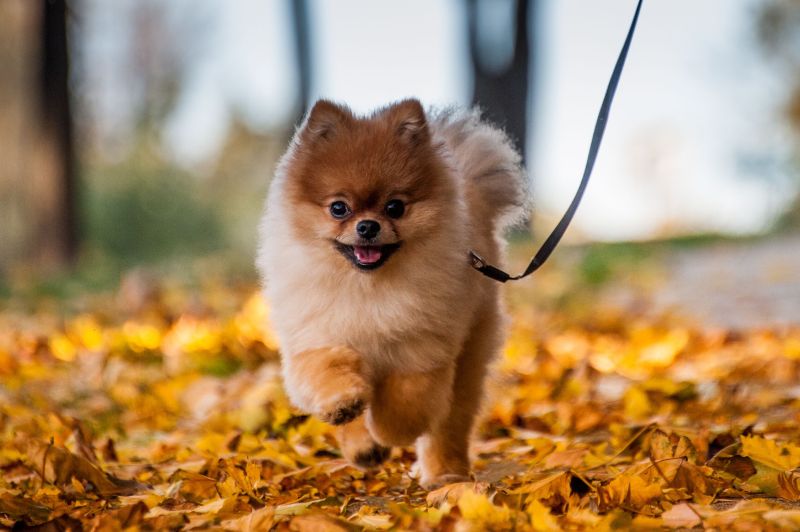Small Dog Training – It is very important to train your Dog Training and it’s even more important if you have a small breed. Even though they are small, some small dogs are just as smart and capable as their bigger peers. There are many small dog types out there, so it can be hard to find the right one for your lifestyle and teaching skills. But some breeds are known for being very easy to train and very obedient, which makes them great choices for first-time dog owners or people who want a well-behaved pet. This guide will talk about the small dog types that are easy to train and give you some great training tips to help you and your furry friend do well.
Table of Contents
ToggleWhy Train a Small Dog Training?
There are many important reasons why you need to train your small dog. For starters, it makes sure that your dog acts well in different settings, which makes them fun to be around. A well-trained dog is easier to control and less likely to have behavior problems, whether it’s meeting guests, walking on a leash, or just listening to directions. In addition, training keeps your dog’s mind active, which is good for its health in general. Small dogs can gain the most from training because it helps them use their often-excessive energy in a good way. Lastly, training your dog makes the bond between you and it stronger, making it easier for both of you to understand and connect with each other.

The 4 Easiest Small Dog Training
When it comes to training, some small dog breeds stand out for their intelligence, eagerness to please, and adaptability. Here are four breeds that are particularly known for their ease of training:
1. Boston Terrier
The Boston Terrier, which is also known as the “American Gentleman,” is a small, dense breed of dog that came from the US in the late 1800s. They were first bred to be war dogs, but now they are friendly and active pets. Because they are smart and want to please, Boston Terriers are very easy to train. Because of their breed background, they have a strong sense of smell and can learn quickly. This makes them great for obedience and agility training. Boston Terriers are also known for being flexible, and they do well in a wide range of living settings, from flats to houses with yards.
2. Toy Fox Terrier
This breed of dog, the Toy Fox Terrier, is lively and smart. It was created in the US in the early 1900s. It doesn’t matter how small they are; Toy Fox Terriers are very smart and intuitive. They learn quickly and do great in dog games like obedience, agility, and more. Their fun and active personalities keep owners on their toes, but they are also very easy to train and adapt to new situations, which makes them a great choice for people who have never had a dog before. Toy Fox Terriers are also known for having a close bond with their owners and being quick to understand and follow signs and orders.
3. Miniature Schnauzer

The Miniature Schnauzer is a small, smart dog breed that goes back to the late 1800s in Germany. Miniature Schnauzers are known for being smart, quick, and eager to please. They were created by mixing Standard Schnauzers with smaller breeds like the Affenpinscher and Pinscher. This breed is very flexible and does well in both city and country settings. Little Schnauzers get along great with kids and other pets, which makes them a great choice for a family dog. They look very different because of their beards and eyebrows, and they are fun to be around because they are friendly and playful.
4. Pembroke Welsh Corgi
The Pembroke Welsh Corgi is a small but strong breed that comes from Wales and has been around since the 1100s. Corgis have a strong work ethic and learn quickly because they were originally bred to handle sheep and horses. Because they are smart and have a lot of energy, they are easy to train, but they need a lot of mental and physical exercise to be happy. Pembroke Welsh Corgis are known for being loyal dogs that make great pets for families with lots of things to do. People who own dogs, like Queen Elizabeth II, who has had several Corgis over the years, like them because they are easy to train and adaptable.
Training Tips for Small Dog Breeds

Training a small dog can be a fun and rewarding experience, but it does come with its challenges. Here are some tips to help you get the most out of your training sessions:
1. Start Early and Be Consistent
One of the keys to successful training is to start early and be consistent. Puppies have a natural curiosity and desire to please, making them ideal candidates for training. Begin with simple commands like “sit” and “stay,” and gradually introduce more complex commands as your dog becomes more comfortable with the training process. Consistency is crucial; ensure that everyone in your household uses the same commands and training techniques to avoid confusing your dog.
2. Use Positive Reinforcement
One of the best ways to train someone is to use positive feedback. For good behavior, give your dog treats, praise, or something else that makes them feel good, like a favorite toy. For instance, give your dog lots of praise and a treat when they do what you ask of them. This will help your dog make a good connection between the order and the treat, which will make it more likely to do it again. If you use negative feedback, like yelling at or punishing your dog, it can become scared and anxious.
3. Keep Training Sessions Short and Sweet
Small Dog Training, particularly puppies, have short attention spans and can quickly become bored. To keep them engaged, keep training sessions short and focused. Aim for 10-15 minute sessions several times a day rather than one long session. This approach helps keep your dog motivated and ensures they retain what they’ve learned. As your dog becomes more accustomed to training, you can gradually increase the duration and complexity of the sessions.
4. Be Patient and Persistent

Training a dog, especially a small breed, requires patience and persistence. Some dogs may take longer to learn certain commands or behaviors, but with consistent training and positive reinforcement, they will eventually get there. It’s important to remain calm and patient throughout the process, as frustration can hinder your dog’s progress. Celebrate small victories along the way and remember that every dog learns at their own pace.
5. Incorporate Play and Socialization
Dog Training doesn’t have to be all about commands and obedience. Incorporating play and socialization into your training routine can make the process more enjoyable for both you and your dog. Play games that encourage your dog to follow commands, such as fetch or hide and seek. Socializing your dog with other dogs and people is also crucial, as it helps them become well-rounded and confident in different environments.
Conclusion
It can be really fun and beneficial to train small dog breeds. The types listed above, like the Boston Terrier, Toy Fox Terrier, Miniature Schnauzer, and Pembroke Welsh Corgi, are known for being smart, eager to please, and easy to train. This makes them great choices for people who want an easy-to-train pet. If you use the training tips given, you can teach your small dog good manners, build a stronger bond with him, and have a happy, well-behaved pet for years to come. Remember that the keys to good training are patience, stability, and positive reward. If you use the right methods, your small dog will do great.
- Wildlife Conservation Initiatives: A Critical Overview - September 4, 2024
- 3 Program Endangered Species Protection - September 4, 2024
- Threatened Wildlife Species in 2024 - September 4, 2024







